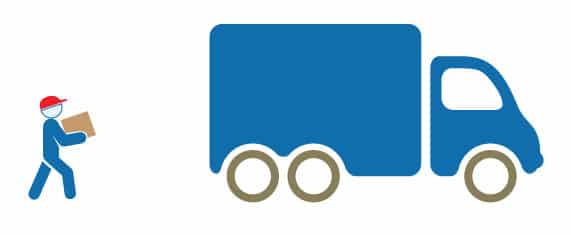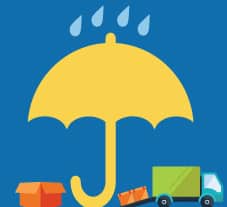If your goal is to increase your eCommerce sales, you won’t have to go far to find good advice. The first hundred articles you find on Google will extol the virtues of good branding, SEO, and well-placed ads.
It’s no wonder that you’ll find similar advice on different websites. A lot of the advice you will read, after all, is really good advice. The trouble is, your competitors know the importance of branding, SEO, and advertising too. If you want to make a lot of sales, you have to consider underrated ways to boost eCommerce sales too.
Common & Useful Tips
But first, let’s recap common, but genuinely useful advice that you’ll see a lot of online.
- Build a mailing list. Email marketing remains one of the most cost-effective ways to market.
- Use social media. Customers genuinely do use social media to investigate companies and make purchasing decisions.
- Optimize your store’s SEO. This important to ensuring that your website ranks well in search engines like Google.
- Focus on good branding. Good branding can help build trust and retain customers.
- Provide great customer service. Self-explanatory.
- Run Facebook ads. Facebook still remains one of the most cost-effective ways to run ads.
All of this advice is good, but in our opinion, it’s repeated so often that it’s essentially conventional wisdom by now. We’d like to go below the surface and identify ways that you can grow your business that aren’t as immediately obvious.
Cue the underrated tips.
1. Implement a generous return policy.
To a casual observer, it would seem that making it easy for customers to return items would cost money. After all, not only do you have to refund the cost of the merchandise, but you also have (or ought) to pay for the return shipping too.
According to a study conducted by UPS, 68% of shoppers check an eCommerce website’s return policy before making a purchase. The same study notes that 15% of shoppers abandon their shopping carts entirely when the return policy is unclear.
When looked at this way, it’s clear that customers avoid companies that don’t have generous return policies. After all, no customer wants to risk losing their money if the product doesn’t work! Generous return policies, therefore, increase conversion rate.
That’s not all, though. The same study goes on to show that when customers make returns, 44% make additional purchases in the process. Lastly, when the return process goes well, customer revenue increases, on average, 21%.
In short, generous return policies both convert leads and retain customers.
2. Ship quickly.

For better or worse, eCommerce shopping is about instant gratification. As many as 69% of consumers who receive items late are less likely to buy from the same company.
Put another way, slow shipping is a major drag on customer retention. As you’ll recall, retaining customers is much easier than acquiring them, so this can be really bad.
On the flip side, though, if your company regularly ships packages on-time and intact, you’re more likely to retain customers. That’s why outsourcing fulfillment often ends up paying for itself.
3. Allow guest checkouts.
Customers don’t like having to make accounts to make purchases. If you allow your customers to check out as a guest, you will not only increase the conversion rate of your store, but you may even retain customers as well.
This is one of those tiny details that gets lost among flashy tips, but it’s so important.
4. Reduce choices.
Many businesses do not consider the value of reducing the choices that customers make. It seems like sacrilege, really, to even suggest that eliminating choices could make customers happier with their purchase. But get ready to file this under “weird, but true” because there is a real psychological reason for this.
Having to make decisions is exhausting. The feeling of indecision and depletion that comes from having to make too many choices is called decision fatigue. When your customers feel it, they get indecisive and fail to make an actual purchase.
Figure out what your customers are most likely to want and present it to them in the most straightforward way possible. You may lose a handful of people who say “that’s not what I want.” Yet if you do this well, you will increase your sales because you reduced your other customers’ decision fatigue.
5. Find sources of cart abandonment and fix them.

We’ve talked about the many reasons that customers abandon their shopping carts before. The truth is that shopping cart abandonments happen for different reasons on different websites.
What you, as an eCommerce store owner, can do about this is simple. Open up your analytics, or set them up if you don’t have them, and figure out what’s causing people to drop off your site. Even modest improvements to your shopping cart abandonment rate can pay off quickly.
6. Find ways to retain customers.
We’ve also talked about customer retention before. Every business is different because they propose value to customers in a different way. For this reason, you need to once again review your own analytics and see what specific actions you can take to improve customer retention.
Many of the guides you will read online will talk about earning conversions and increasing traffic. Yet fixing customer retention pays off much more quickly than increasing conversions and traffic.
7. Increase payment options.
No customer is going to beg your company to take their money. There are few things quite as annoying as getting ready to make an online purchase but finding that your credit card is not accepted. It’s annoying to have to retrieve your wallet and enter your credit card information because you can’t pay with PayPal.
To maximize your conversion rate, you want to accept as many credit cards as possible, as well as PayPal, and – if you can manage it – Apple Pay. Your customers will thank you with sales revenue!
8. Use lookalike audiences on Facebook.
A lot of eCommerce stores run ads on Facebook regularly. This makes sense because Facebook ads usually give a pretty good return on investment. However, if you’re setting up your own audiences on Facebook’s Ad Manager, you may be making some incomplete assumptions about who your audience truly is.
That’s where lookalike audiences come in. Facebook can use your existing customer mailing list or your website’s traffic information to build audiences that look like the people who are already using your store. While it’s by no means perfect, lookalike audiences can often outperform audiences that you create on your own.
It’s at least worth experimenting with. You can check out Neil Patel’s guide for more information on how to create lookalike audiences.
9. Address questions and objections in copy.

If you want to increase conversions, sometimes it helps to eliminate uncertainty as much as you can before customers make a final purchase. We think this Wordstream article said it best:
Consider every question you can possibly think of about your product, and answer it in your copy on your product pages. Similarly, think about every potential objection a prospect might have about your offering, and preemptively overcome it in your copy. This might seem impractical, but remember, you’re not bombarding prospects with unnecessary information – you’re giving them exactly what they need to make an informed decision. This approach is also an excellent exercise in writing tight, clear, concise copy. If you’re worried there’s too much copy, you can always trim it down. Just keep the focus on the customer and how it benefits them, not why your company is so awesome.
10. Have real conversations on social media.
Many businesses know that using social media is an effective way to brand their company and promote their products. However, one of the underrated parts of social media marketing is in the name.
Social.
It’s easy to forget, but having real conversations with customers and learning about their needs has a number of benefits. First, you can sell to customers directly when it’s appropriate. Second, you can create better-targeted products and services by taking the time to listen to your customers.
Final Thoughts
There is no shortage of great advice on how to boost your eCommerce store’s sales. Yet so much effective advice is ignored in favor of flashier solutions. By talking about underrated tactics like increasing payment options and allowing guest checkouts, we hope to give you the information you need to quietly slip ahead of your competitors.
You’ve done everything by the book. Your Kickstarter campaign is almost ready to launch.
You made a great product. Built an audience. Set up a campaign page.
But how do you ship it?
We put this checklist together to help you get started. It's free.





